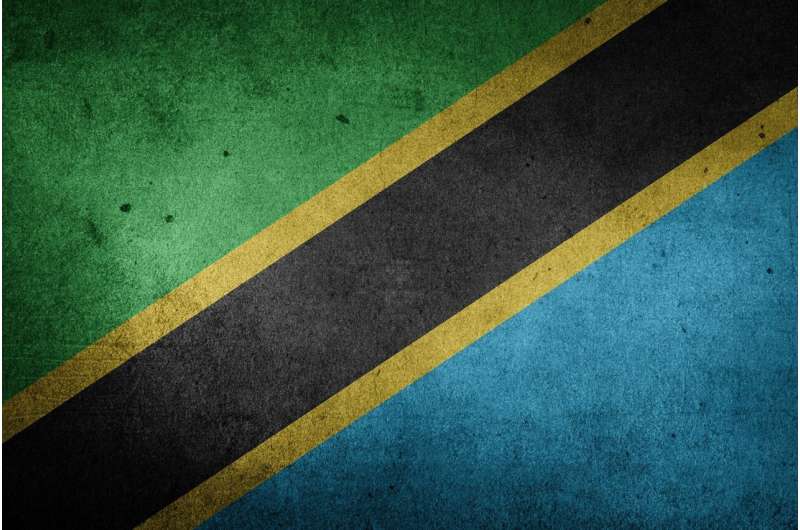This article has been reviewed according to Science X's editorial process and policies. Editors have highlighted the following attributes while ensuring the content's credibility:
fact-checked
trusted source
written by researcher(s)
proofread
Tanzania has ditched school rankings—it should replace them with something more useful

While announcing the results of the 2022 Certificate of Secondary School Examination, Tanzania's National Examination Council did not provide school rankings for the first time in decades.
School rankings have been announced for national primary and secondary school exams every year since the early 1990s. The rankings have become the main national talking point and students and parents often use them to determine school choices.
Explaining the decision, education minister Professor Adolf Mkenda said the examination council had decided in November to distance itself from ranking schools. He said the rankings had become controversial because they determined performance based on only one factor—the final exam. Other factors at play were not factored in.
For instance, he told Parliament, schools that had a high number of candidates were placed on the same scale as those that had a handful of candidates. High student numbers are associated with poor teacher-student ratios. This can translate to longer working hours for teachers as well as poor student supervision, thereby compromising quality.
School rankings are basically a performance-based listing of institutions from top to bottom by the national examination council. In Tanzania and other countries such as Kenya and Uganda, they are based on a one-off, final national examination performance.
It is a practice that has been embraced as a yardstick for education quality. The best-performing schools, teachers and students are featured in leading media (both print and online), receiving cash or non-cash rewards.
The decision not to rank Tanzanian schools in the 2022 exam has therefore kicked off a big debate. Many argue that the abolition of rankings will demotivate schools and undermine competition for higher grades among students and regions.
But it is my view that school rankings bring more harm than good. School rankings as they are arrived at currently often deepen inequalities between students. This is because the performance of students at vastly different schools over several years is judged on one score. Schools at the bottom of the list are simply labeled as poor performers.
School rankings are not altogether a useless tool, though. Rankings offer value if performance proxy indicators and benchmarks are carefully designed. They should have a clarity of purpose and be cognisant of the broader mission of learning, the prevailing education philosophy and policy goals.
In fact, performance indicators have an important role in national development. They can be used to achieve national priorities such as those set out in the National Development Vision 2025.
Tanzania should therefore replace school rankings with alternative instruments that genuinely serve educational and community objectives.
School rankings, good and bad
The practice of school rankings suffers a great deal from both methodological and technical weaknesses. Some studies have found that the playing field is not level for all participating schools.
In Ghana, the introduction of school rankings in 2004 brought unintended consequences of examination malpractice in senior secondary school certificate examination. These included impersonation, copying from the scripts of other candidates and smuggling of foreign materials into examination room.
School rankings differ in methodologies and procedures. They're also used differently.
In Australia, for instance, the government issues a comprehensive report about school performance across the country showing average scores for similar schools.
In Malaysia and Chile, school rankings are used for accountability purposes as a tool for school improvement. This is aimed at informing policy makers as well as for reporting to parents and school governing boards.
In Tanzania, raw examination scores are placed in a particular grade which consequently calculates Division or Grade Point Average.
But this method tends to ignore the context in which schools operate.
The methodology skips students' socio-economic status, school environment, availability of adequate teaching and learning resources and facilities, presence of qualified teachers and facilities including laboratories in all examined subjects, and prevailing culture in the surrounding community.
For instance, some schools carefully select students with high academic performance and high socio-economic status. The academic progress of such students is closely monitored afterwards to ensure top performance. Students who are likely to perform poorly—and thereby lower the school average position in national examination rankings—are discontinued.
In addition, most private schools have institutionalized after-school programs or classes, coaching for exams, preparatory monthly tests and joint mock examinations before the final national examination. Some schools with good resources at their disposal still under-perform, though.
Another methodological flaw is the failure to take account of continuous assessment tests. Continuous assessment is not without critics. It does not take into consideration several factors such as special educational needs, gender and distance from school. It also does not take account of disparities in school capacity and parents' readiness to supplement government funds, grants or subsidies.
Therefore, the current school rankings compare schools which have different learning environments and differ in other contextual factors.
The pressure on students to rank higher has encouraged unhealthy competition among schools. For these reasons, it is high time for Tanzania to abandon the conventional metric system of school rankings.
This should be replaced by an emphasis on suitable teaching and learning environment. At the core of this should be addressing individual learners' needs and the provision of quality education for all.
Provided by The Conversation
This article is republished from The Conversation under a Creative Commons license. Read the original article.![]()





















